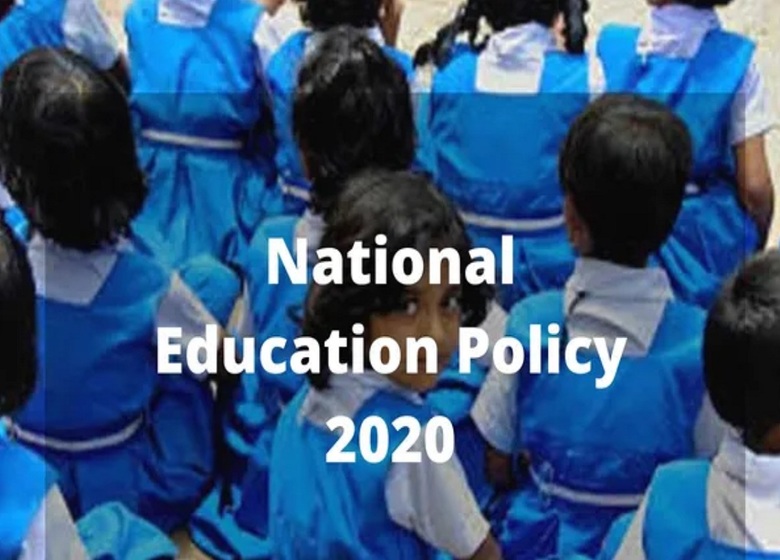The Union Cabinet approved the New National Education Policy on 29 July 2020 and renamed the Ministry of Human Resource and Development as the Ministry of Education. This would introduce transformational changes to the country’s schools and higher education systems. It is the 21st century’s first education reform and replaces the 1986 National Policy on Education (NPE) which is 34 years old. Continue reading to know all about the New National Education Policy 2020.
I wholeheartedly welcome the approval of the National Education Policy 2020! This was a long due and much awaited reform in the education sector, which will transform millions of lives in the times to come! #NewEducationPolicyhttps://t.co/N3PXpeuesG
— Narendra Modi (@narendramodi) July 29, 2020
Purpose An National Education Policy Serve
A comprehensive NEP is an educational structure to direct the country’s growth. In 1964, Congressman Siddheshwar Prasad first criticized the government for its absence of education vision and philosophy. National and organized education policy was adopted by the same year by a 17-member Education Commission, headed by then UGC chairperson D S Kothari. Parliament adopted the first education reform in 1968, on the basis of this Commission’s suggestions.
Every few decades a new NEP is typically made. To date, India’s had three. The first came in 1968 and the second came in 1986, respectively, under Indira Gandhi and Rajiv Gandhi; the 1986 NEP was updated in 1992 when P V Narasimha Rao was Prime Minister. The third is the NEP released on Wednesday under Narendra Modi’s Prime Ministership.

Facts About New National Education Policy 2020
School Education: Facts
- The new strategy aims at universalizing pre-school-to-secondary education by 2030 at a gross enrolment ratio of 100 percent (GER).
- The NEP 2020 will bring 2 crores back into the mainstream, through the open school system.
- A new curricular structure of 5 + 3 + 3 + 4 aged 3-8, 8-11, 11-14, and 14-18 will replace the existing 10 + 2 system of school. The new program would put an uncovered 3 to 6 years of age to the school curriculum. This is the age that has been internationally recognized as the critical period for improving a child’s mental faculties.
- There will be twelve years of schooling with three years of Anganwadi / pre-schooling according to the new policy.
- Foundational Literacy and Numeracy are emphasized in the new policy. The distinction between the academic and non-school sources in schools will not be rigid. Vocational Training should start with internships from class 6.
- According to the New Education Policy, instruction in the mother tongue or regional language up to at least Grade 5 will be provided. There will be no language forced on any student.
- The assessment changes with the Holistic Progress Card (360 degrees) and the students’ progress towards learning results will be tracked.
- A new and comprehensive National Teacher Education Framework (NCFTE) is being planned by NCTE in consultation with NCERT in 2021. The minimum level of qualification for teaching will be a 4-year integrated B.Ed. degree by 2030.

Higher Education: Facts
- In higher education, the Gross Enrolment Ration is increased to 50% by 2035 and higher education is expected to add 3.5 crore seats.
- The curriculum of higher education to possess Flexibility of subjects.
- Various entrances/exits to be allowed with the relevant certification.
- The Academic Credit Bank will be developed to facilitate the transfer of credits.
- The National Research Foundation will be set up as an apex to promote strong research culture and develop capacity in higher education.
- The Indian Higher Education Commission (HECI) will be created, excluding medical and legal education, for the whole of higher education. It’s going to be a single overarching umbrella body.
- The Higher Education Commission of India (HECI) will have four autonomous verticals for oversight, namely the National Higher Education Regulatory Council (NHERC), the General Education Council (GEC), the Higher Education Grants Council (HEGC), and the National Accreditation Council (NAC) for accreditation.
- Affiliation program to be phased out to colleges in 15 years of graded autonomy.

Other facts
- In setting up the Gender Inclusion Fund, Special Education Areas for Deprived areas and provinces, NEP 2020 would also focus.
- Increasing public investment in the education sector to hit 6 % of GDP as soon as possible, and both the Center and the States must work together to achieve this.
- The NEP should encourage multilingualism in both schools and higher education. Hence the establishment of the National Institute for Pali, Persian, and Prakrit, Indian Institute of Translation and Interpretation.
Open and Distance Learning
Open and distance learning should be broadened to play a major role in rising GER. Measures such as online classes and digital repositories, academic support, enhanced student facilities, credit-based recognition, etc. should be taken to ensure that everything is in line with the highest quality in-class programs.
Online and Digital Education
A dedicated unit for developing digital infrastructure, digital content, and capacity building will be created in the MHRD to meet the e-education needs of both the school and higher education.
Technology In Education
An independent body, the National Educational Technology Forum (NETF), will be established to provide a forum for a free exchange of ideas on the use of technology to improve learning, evaluation, preparation, management. To strengthen the classroom processes, promote the professional development of teachers, expand access to education for marginalized groups, and streamline educational preparation, administration, and management, effective incorporation of technology across all educational levels must be achieved.
Promotion Of Indian Languages
NEP recommends the creation of an Indian Institute of Translation and Interpretation (III), a National Institute (or Institutes) for Pali, Persian, and Prakrit, the strengthening of Sanskrit and all language departments in HEIs, and the use of mother tongue / local language as a means of instruction in further HEI programs to ensure the survival, growth, and vitality of all Indian languages.
Financial Support For Students
Efforts should be made to promote the interest of SC, ST, OBC, and other SEDG students. The National Scholarship Platform will be extended to help, promote, and monitor the success of scholarship-receiving students. Private HEIs will be allowed to give their students greater quantities of free ships and scholarships.
For English-medium schools, what does focus on mother tongue / regional language mean?
This focus is not new: Many of the country’s government schools already do this. As for private schools, it is doubtful they’ll be forced to change their teaching medium. A senior official at the ministry explained that mother tongue provision as a medium of instruction was not compulsory for states. “Education is a concomitant subject. That’s why the policy makes it clear that children should be taught ‘wherever possible in their mother tongue or regional language, “the officer said.
So these are some key elements about India’s New National Education Policy (NEP) in 2020. Hoping this strategy would improve the country’s jobs, and fundamentally change our educational ecosystem.
Also Read: Do you wish for an IB education for your child?













